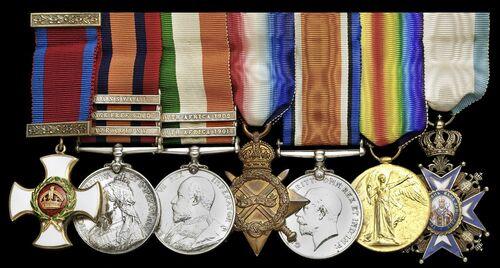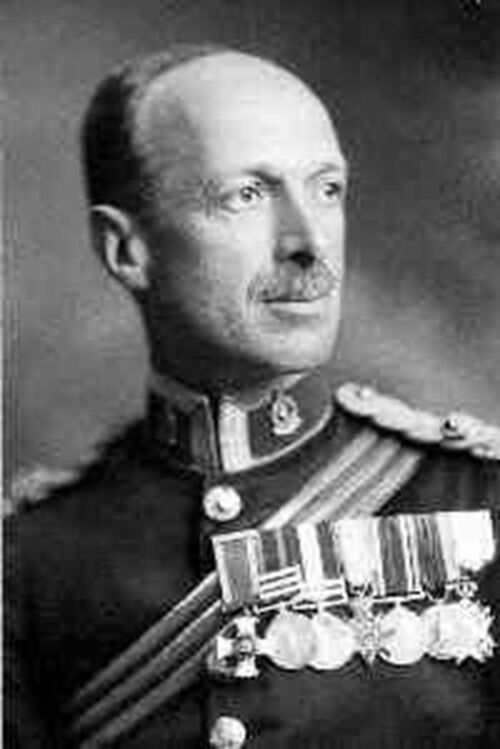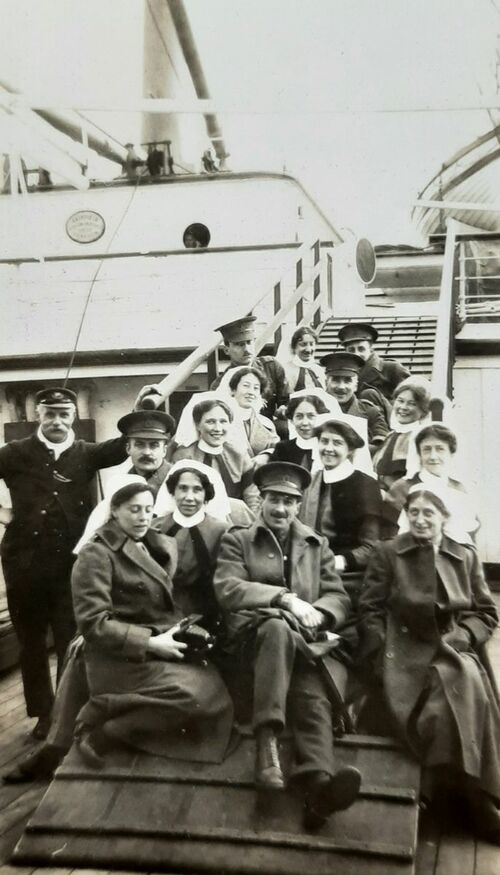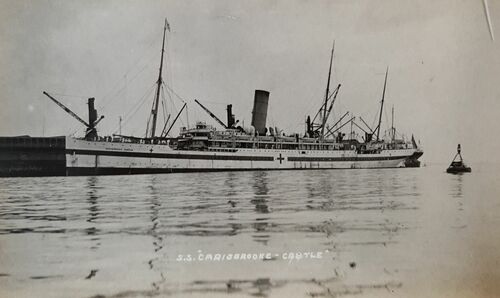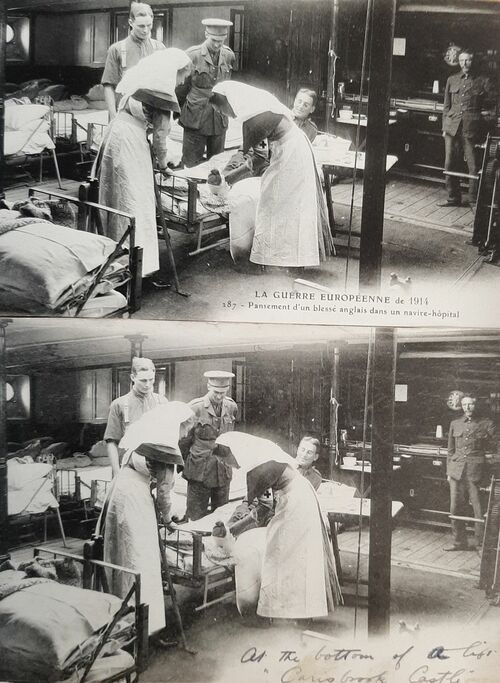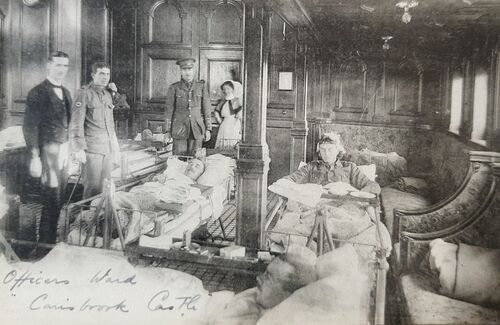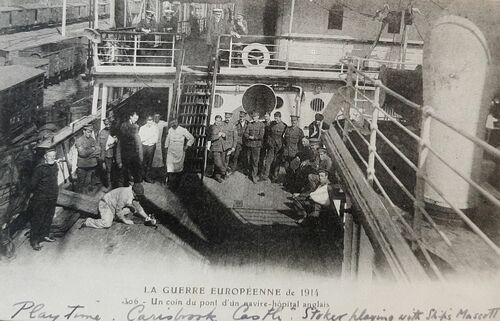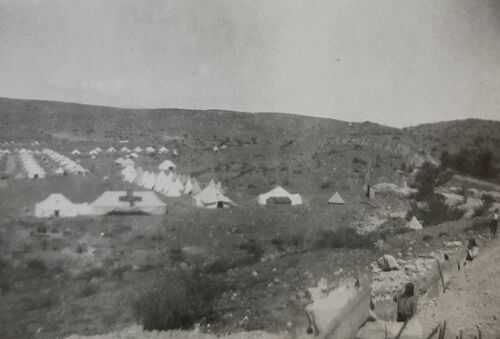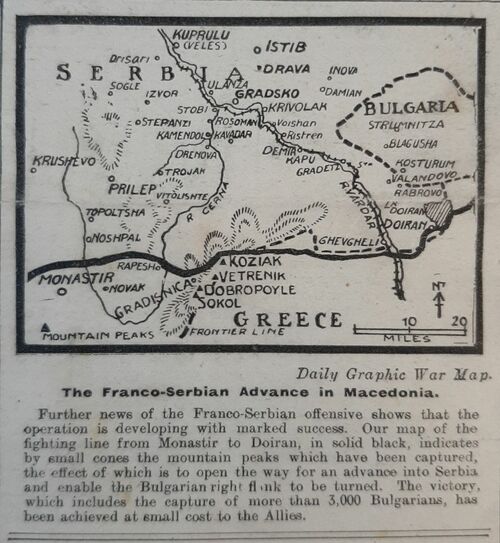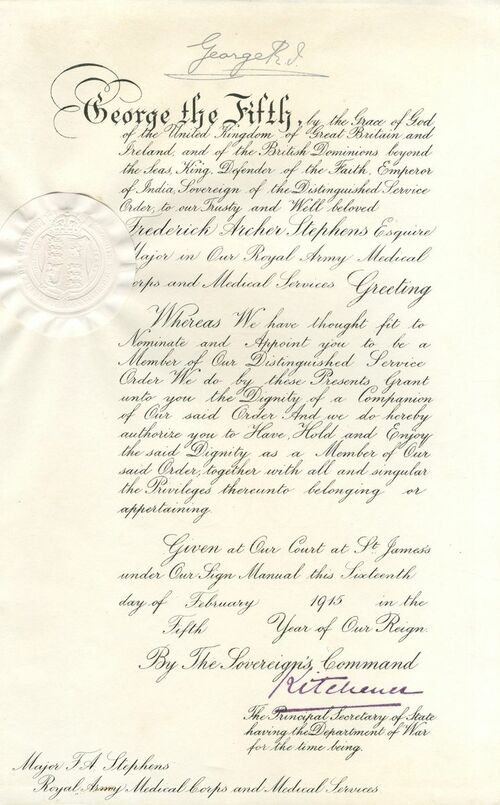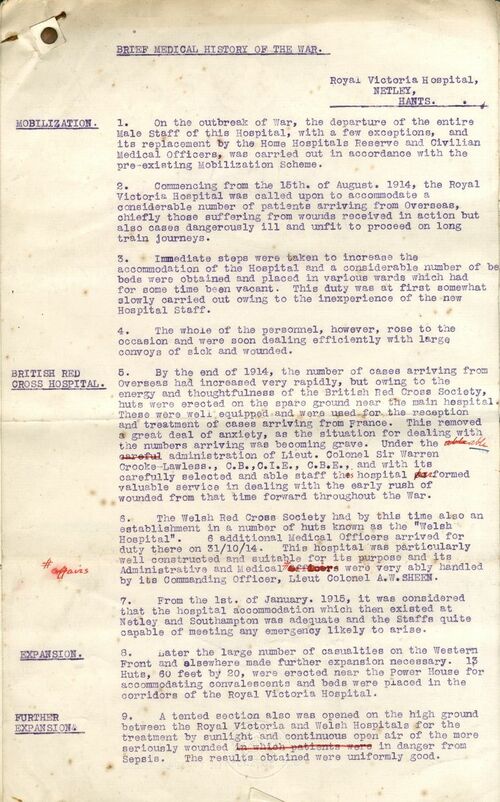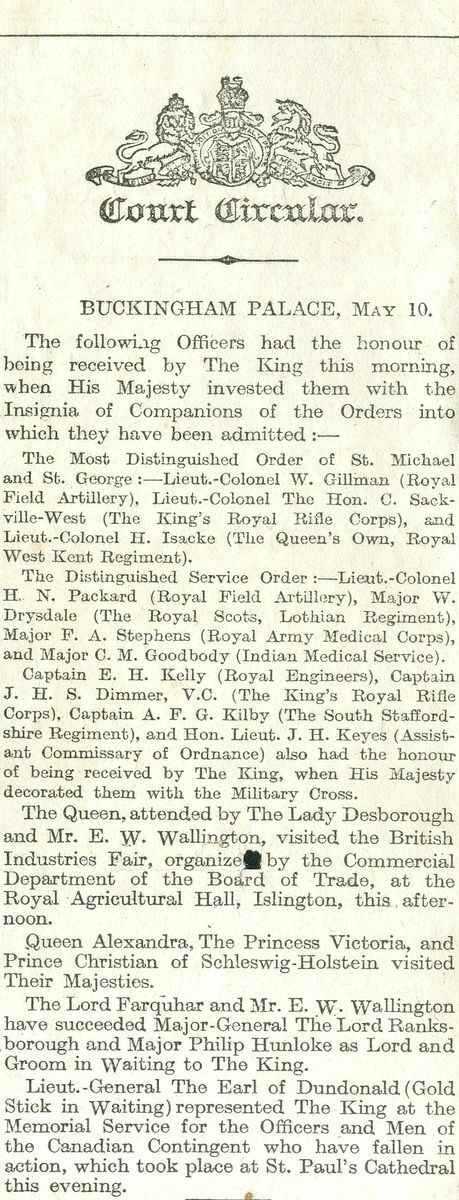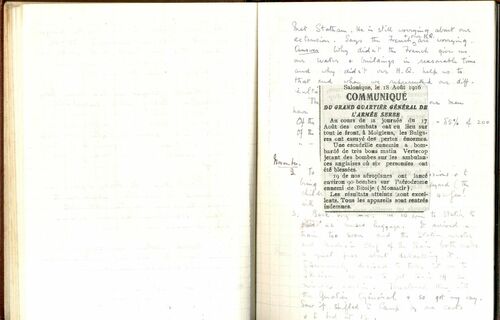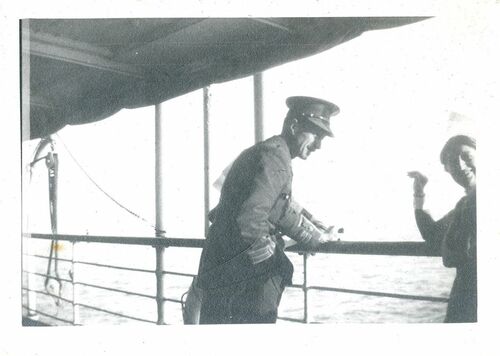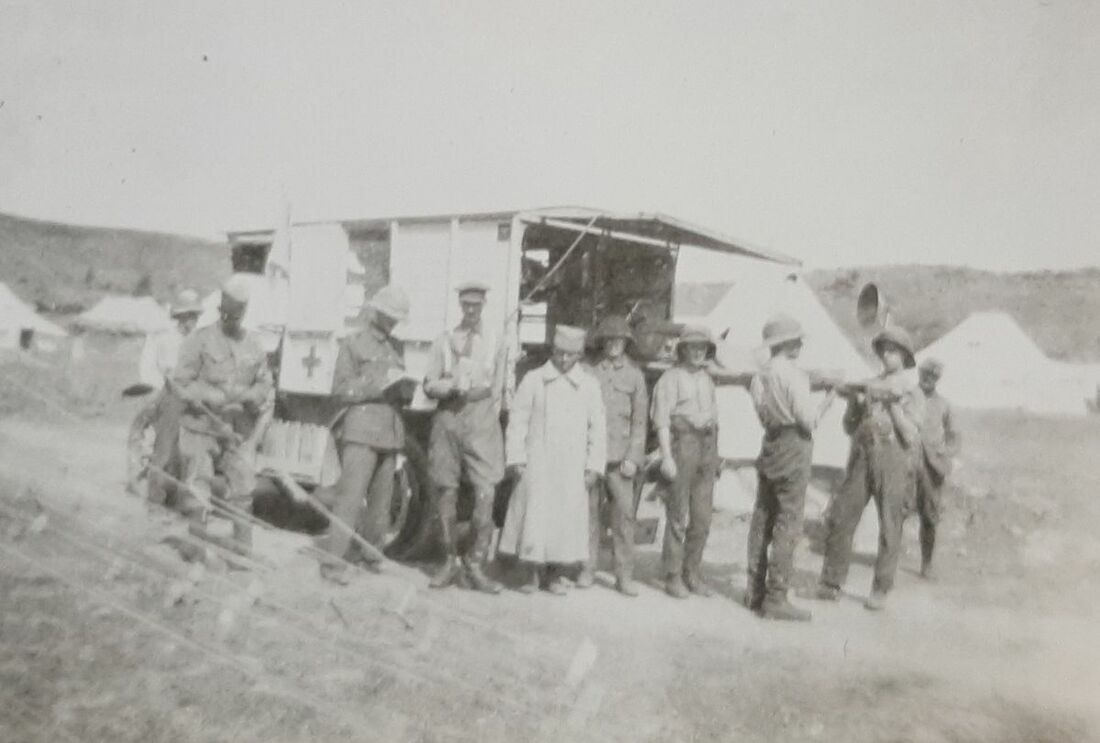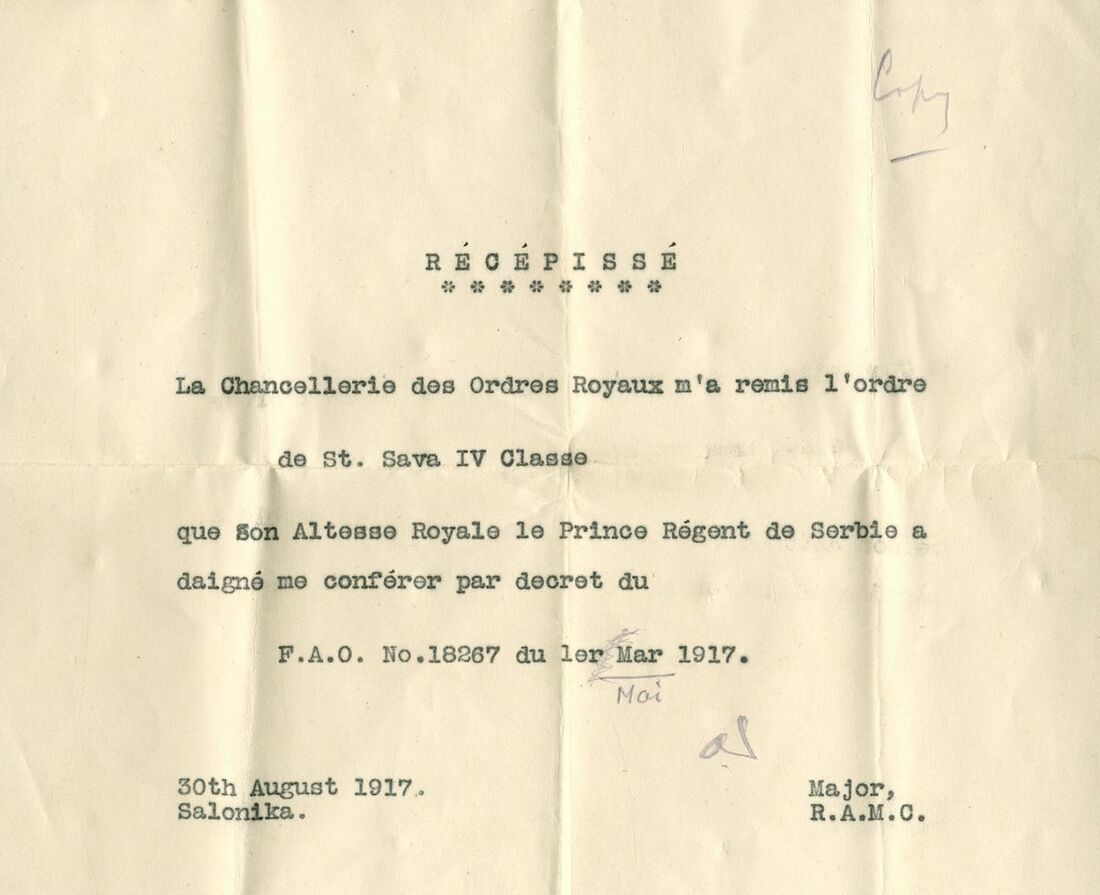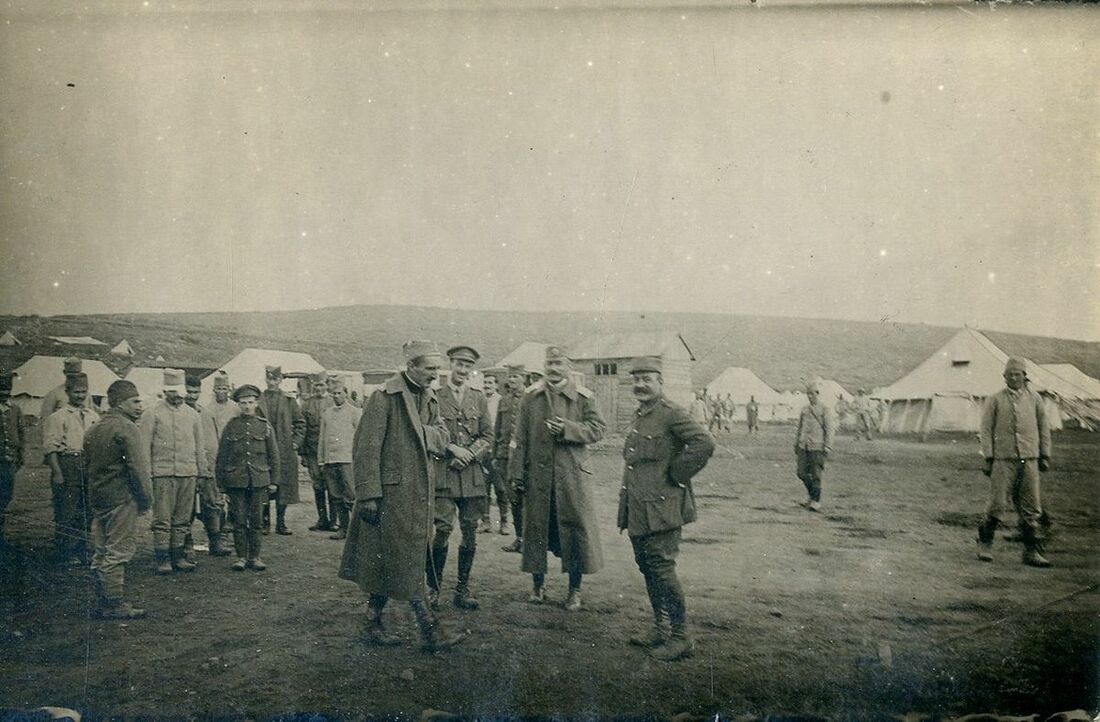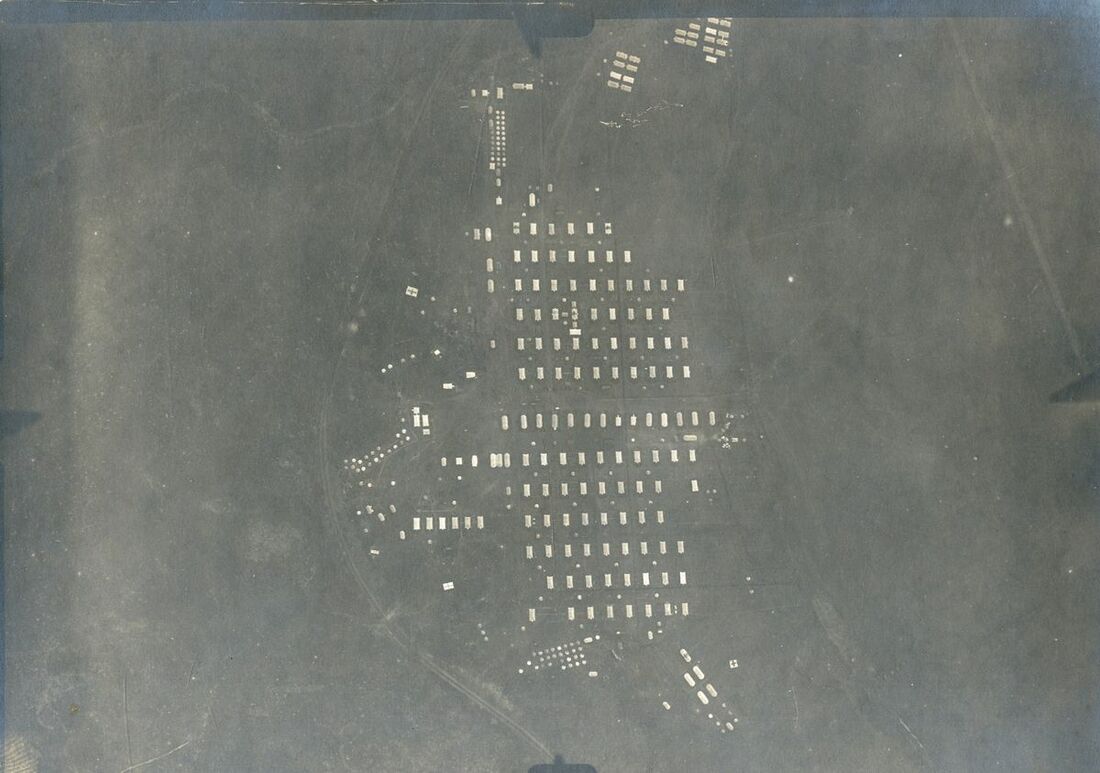Auction: 23003 - Orders, Decorations and Medals
Lot: 211
A well-documented 'Hospital Ship Commander's 1915' D.S.O., 'Salonica 1917' Order of St. Sava group of seven awarded to Lieutenant-Colonel F. A. Stephens, Royal Army Medical Corps, an Old Shirburnian who commanded the second Hospital Ship to go to France during the Great War
Distinguished Service Order, G.V.R., silver-gilt and enamel; Queen's South Africa 1899-1902, 3 clasps, Cape Colony, Orange Free State, Transvaal (Lieut: F. A. Stephens, R.A.M.C.); King's South Africa 1901-02, 2 clasps, South Africa 1901, South Africa 1902 (Lt. F. A. Stephens, R.A.M.C.); 1914-15 Star (Major F. A. Stephens. R.A.M.C.); British War and Victory Medals (Lt. Col. F. A. Stephens.); Serbia, Kingdom, Order of St. Sava, Officer's 4th Class breast Badge, silver-gilt and enamel, mounted as worn, with a fitted Spink & Son case, minor contact wear to second and third, minor enamel damage to last (7)
D.S.O. London Gazette 24 March 1915.
Order of St. Sava London Gazette 28 January 1918.
M.I.D. London Gazette 17 February 1915.
Frederick Archer Stephens was born at Bridport, Dorset on 5 January 1872, the son of Joseph and Susanne Stephens of Wanderwell House, Bridport. Educated first at Sherbourne School (Price's; 1885-88) he later joined King's College Hospital on 1 October 1888 to study Medicine.
He is listed upon the 1891 census as a medical student whilst living at 41 Guilford Street, St. Pancras, London; despite training in London his qualifications were passed in Edinburgh and Glasgow. Having qualified as a Civil Surgeon, Stephens volunteered for service in the Anglo-Boer War and entered the conflict in that capacity on 11 May 1900. After several months he was officially commissioned Lieutenant with the Royal Army Medical Corps on 14 November 1900, serving attached to the Northamptonshire Regiment, Field Force.
Remaining with this unit, Stephens was stationed first in Gibraltar and later in Edinburgh where he was promoted Captain on 14 November 1903. Appointed Adjutant to the Royal Army Medical School of Instruction on 15 June 1908 he was later also Adjutant of a Territorial Brigade where he had responsibility for organising the original detachment of the V.A.D. Posted to India, Stephens served there for some time before being invalided back to Britain in 1912.
On the outbreak of the Great War he rejoined the Royal Army Medical Corps with the rank of Major and was given command of the Hospital Ship Carisbrooke Castle. This reserve Hospital Ship was the second such vessel commandeered for service in the conflict and assigned the designation 'Hospital Ship No. 2'. In the event she was also one of the first vessels to make the crossing to France in support of the British Expeditionary Force. Stephens was the Medical Officer in command when she first landed on 13 August 1914; Hospital Ship staff were considered to be serving afloat rather than ashore, and as such were only entitled to the 1914-15 Star.
After a year in command of the Carisbrooke Castle, Stephens was awarded the D.S.O. and ordered back to Britain: the Investiture was at Buckingham Palace and it is noted in his obituary in the Bridport News that he was 'among the first twelve officers to be decorated with the D.S.O.'. Carisbrooke Castle was not to be his final active posting and he was next given command of No. 37 General Hospital, attached to the Serbian Army, at Salonika on 15 June 1916.
This was a difficult posting for several reasons - the environment in the Salonika theatre was famously testing. To make matters worse, the unit had no idea where they were to be posted and found themselves with little in the way of necessary supplies. The chaos of the theatre is well summed up by an illuminating anecdote in one newspaper article, which states:
'A Russian soldier was knocked down by an Italian lorry. He was picked up by a French Ambulance, and taken to a British Hospital on Greek territory, run for the benefit of the Serbs. The doctor who attended him was a Canadian, the Sister of the ward Scotch, the orderly Irish, and the means of communication between doctor and patient German. On the staff of the Hospital was a Roumanian doctor, and at the gate an Annamite camp. This is a statement of actual fact which happened at - Hush! here comes the Censor!'
Written in pen beneath this anecdote, doubtless by the recipient is: 'No 37 General Hospital'. Stephens kept his own diary, originally intended as a hospital Log but this soon repurposed to note the importance of their work, with the entry for 1 July 1916 stating:
'Visit from Major Solomon, British Liaison Officer to Serb Army. He was very pleased with the hospital + promised us every help, whereupon gave him a list of essentials already applied for. He says Serbs have 60% sick but all refuse to return to base. They might consent to come as far back as this + he is therefore anxious for us to commence taking patients.'
The next day his diary notes the hospital was bombed by German aircraft resulting in 'much digging for souvenirs'. This carefree attitude was not to last however as technology advanced quickly and the bombing became more effective: a raid the next year on 12 March 1917, saw two Nurses and four Medical Orderlies killed.
Stephens performed admirably at Salonika, earning the Order of St. Sava as recognition of his efforts and appears to have struck up a friendship with Prince (later King) George of Serbia here. His obituary notes:
'During his service there he negotiated with the Rev. A. Milne, M.F.H. of the Cattistock to obtain two couples of hounds for Prince George of Serbia.'
The diary also later notes a visit to the Prince in Paris during a stretch of leave in early 1918. Returning to Salonica in February, his appointments for the last year of the war are unclear but he seems to have served with the 2/1st Northumbrian Field Ambulance, at some stage, being demobilised on 12 January 1919.
With the end of the war Stephens finally returned to his civilian role as a doctor, marrying Inez Glover in January 1922 at St. Pancras, London. Given that both were involved in the medical profession and Stephens had trained in that same area that Glover was raised, it seems likely they had known one another prior to the Great War. He is noted as living at 3 Oxhey Road, Watford in 1930 and was still living in the city in 1939.
After the outbreak of the Second World War the family appears to have moved back to Dorset with Stephens listed in 1942 at Haddon House, Bridport Harbour, Dorset. Joining the Local Defence Volunteers (forerunner to the Home Guard) Stephens was the first of the West Bay Platoon to volunteer. In his spare time he was President and later Secretary of the Bridport and District Hospital League. Stephens was to die at Bridport on 20 February 1960.
Both of his brothers served during the Great War with the eldest, John August Stephens, a Major in the Royal Artillery. The youngest of the three, Sidney Thompson Stephens, was previously a Lieutenant-Commander with the Royal Navy: having retired by the outbreak of war Stephens unusually enlisted as a Private with the 9th Battalion, Devonshire Regiment and won the D.C.M. with them (London Gazette 14 January 1916). Commissioned 2nd Lieutenant, he remained with the Devons to win the M.C. during the Battle of the Somme (London Gazette 26 September 1916) but was sadly killed in action on 9 October 1917.
Sold together with a large archive of original and copied research including:
i)
The documents of bestowal for the recipient's D.S.O.
ii)
Correspondence including letters from the recipient's family, friends and compatriots.
iii)
Photographs and postcards related to the H.M.H.S. Carisbrooke Castle, both annotated by the recipient.
iv)
Two newspaper clippings relating to the investiture of the D.S.O.
v)
A telegram, in French, confirming the award of the Order of St. Sava.
vi)
The Brief Medical History of the War, a typed nine-page document with handwritten annotations, likely by the recipient.
vii)
The Log of No. 37 General Hospital, dated between 7 June 1916-25 February 1918.
viii)
A collection of letters, newspaper clippings and photographs relating to the recipient's time in Salonica.
ix)
Spare riband bars and clasps for the Q.S.A.
x)
Copied obituaries from the Bridport News and Journal of the Royal Army Medical Corps.
Subject to 20% VAT on Buyer’s Premium. For more information please view Terms and Conditions for Buyers.
Sold for
£2,000
Starting price
£1200

